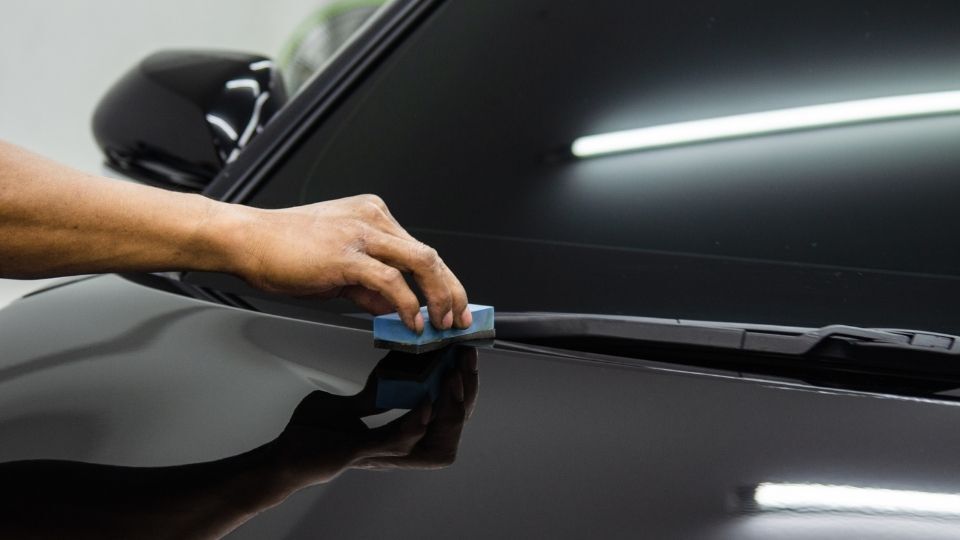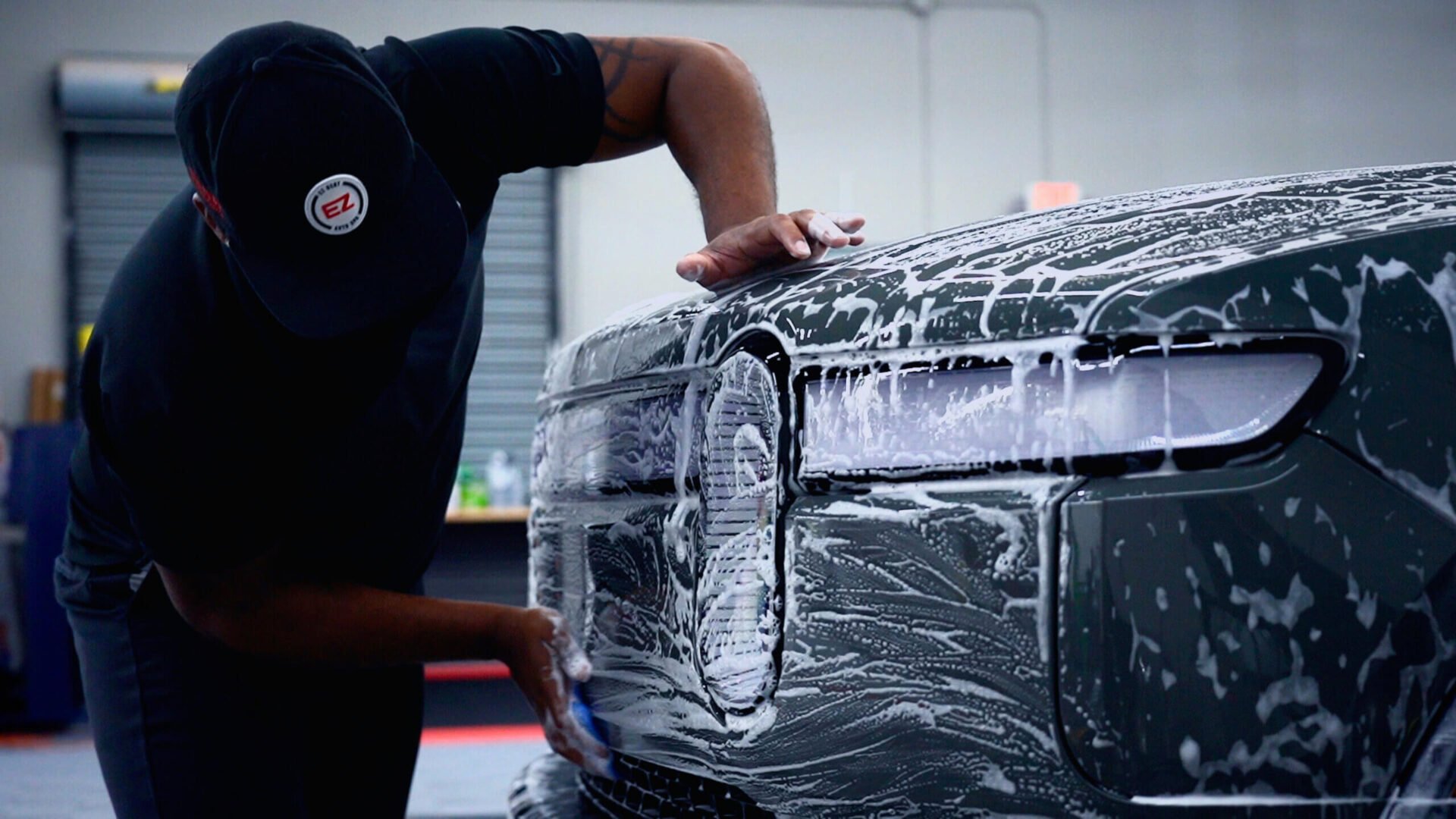Top Benefits of Ceramic Coating for Long-Lasting Car Care
Wiki Article
Ceramic Layer vs. Traditional Wax: Which Supplies Better Long-Term Defense?
The argument between ceramic finishes and standard wax for car security has actually gathered considerable focus among vehicle lovers and professionals alike. Ceramic coatings boast superior long life and resistance to environmental variables, yet the intricacy of their application elevates concerns regarding accessibility and functionality.Review of Ceramic Finishing
Ceramic covering has actually obtained substantial appeal among vehicle lovers and detailers alike because of its sophisticated safety high qualities. This cutting-edge technology is made to develop a sturdy, hydrophobic guard over a car's paint surface area, dramatically boosting its resistance to environmental contaminants such as dust, UV rays, and chemical spots. Unlike typical wax, which gives a short-term layer of protection, ceramic layers bond at a molecular level with the paint, providing resilient toughness-- often prolonging beyond 2 years with correct upkeep.The application process involves thorough prep work of the lorry's surface, consisting of cleansing and brightening to make sure optimal bond. Once applied, the finishing cures to develop a durable layer that not only includes deepness and gloss to the paint yet also streamlines maintenance. With its hydrophobic residential or commercial properties, ceramic covering enables water and dirt to slide off more easily, lowering the frequency of laundries and decreasing the risk of swirl marks.
In addition, ceramic layers are readily available in various solutions, permitting customers to pick items tailored to their specific needs and choices. In general, ceramic coating stands for a substantial development in paint security technology, delivering exceptional efficiency compared to conventional choices.
Overview of Conventional Wax
Traditionally considered as a staple in vehicle care, wax functions as a prominent option for those seeking a simple method to boost and safeguard their car's paint - ceramic coating. Automotive wax commonly consists of all-natural active ingredients, such as carnauba, or synthetic substances, developed to produce a protective layer externally of the paint. This layer not just improves the lorry's gloss and beam but additionally supplies a barrier against ecological contaminantsThe application of wax is normally straightforward, making it accessible for both specialists and do it yourself enthusiasts. It can be applied by hand or machine, permitting for convenience in the outlining procedure. When used, wax needs a curing duration, after which it sets to form a safety shell. Wax is additionally recognized for its capacity to ward off water, advertising a beading result that aids in the avoidance of water places and deterioration.
Nonetheless, while wax works for boosting the visual allure of an automobile, it is essential to keep in mind that the security it supplies might demand more regular reapplication compared to alternative products, such as ceramic coatings. Generally, conventional wax stays a preferred choice for those focusing on ease of usage and prompt aesthetic enhancement.
Toughness and Long Life Comparison
While both ceramic coatings and conventional wax offer protective advantages for automotive paint, their toughness and longevity differ dramatically. Traditional wax, commonly made from all-natural carnauba or synthetic polymers, generally gives a safety layer that lasts roughly three to 6 months. This relatively short life expectancy requires normal reapplication to keep optimal security.On the other hand, ceramic coatings are engineered from innovative nanotechnology, forming a covalent bond with the paint surface. This results in a durable, hydrophobic layer that can sustain for 2 to 5 years, depending upon the product and environmental conditions. The remarkable longevity of ceramic layers is connected to their chemical framework, which uses improved resistance to scratches, UV rays, and oxidation.

Protection Versus Ecological Aspects
Protecting an automobile's paint from environmental aspects is essential for keeping its appearance and worth in time. Autos are continuously revealed to a variety of aspects, including UV rays, bird droppings, tree sap, acid rain, and roadway grime, all of which can endanger the integrity of the paintwork.Ceramic finishings provide a robust protection versus these environmental aggressors. Unlike typical wax, which can deteriorate promptly under UV direct exposure, ceramic finishings create a durable, hydrophobic layer that withstands the harmful effects of sunshine and toxic wastes. This advanced innovation develops a chemical bond with the vehicle's surface, supplying superior security that lasts for several years, even in severe conditions.
In contrast, ceramic coverings maintain their safety top qualities longer, considerably decreasing the risk of paint damages and making sure that the automobile maintains its aesthetic allure. As an outcome, ceramic finishings are progressively acknowledged as the exceptional selection for long-lasting protection versus ecological elements.
Application and Upkeep Distinctions
The approaches of application and subsequent upkeep for ceramic finishings and traditional wax vary considerably, influencing the general user experience and performance of each product. Ceramic layers need an even more complex application procedure, usually involving surface preparation that includes washing, sanitizing, and brightening the car. When the surface area is all set, the ceramic covering is applied in a regulated setting, usually requiring specialist expertise to guarantee correct curing and bonding to the paint.

While both items boost vehicle appearance, the longer-lasting security used by ceramic layers might warrant their initial investment, despite the even more demanding application process. Alternatively, traditional wax remains a prominent option for those looking for a less complex, albeit temporary, remedy.

Final Thought
Finally, ceramic finishes demonstrate substantial advantages over typical wax in terms of sturdiness and environmental management. With a life expectancy extending 2 to five years and premium resistance to UV rays, dirt, and chemical discolorations, ceramic layers supply a much more effective service for long-term vehicle upkeep. Although the application process may need specialist proficiency, the resulting cost savings and lowered regularity of reapplication emphasize the worth of ceramic finishes for those seeking optimal automobile defense.The debate in between ceramic finishes and conventional wax for vehicle security has amassed considerable attention amongst automobile enthusiasts and specialists alike. Unlike standard wax, which provides a short-lived layer of security, ceramic layers bond at a molecular degree with the paint, using lasting durability-- usually prolonging beyond 2 years with proper upkeep.
While both ceramic coatings and conventional wax offer safety benefits for vehicle paint, their durability and longevity vary significantly. For automobile lovers looking for long-term security, ceramic finishes provide an engaging advantage over standard wax items.
In conclusion, ceramic layers demonstrate considerable benefits over traditional Click Here wax in terms of durability and ecological defense.
Report this wiki page